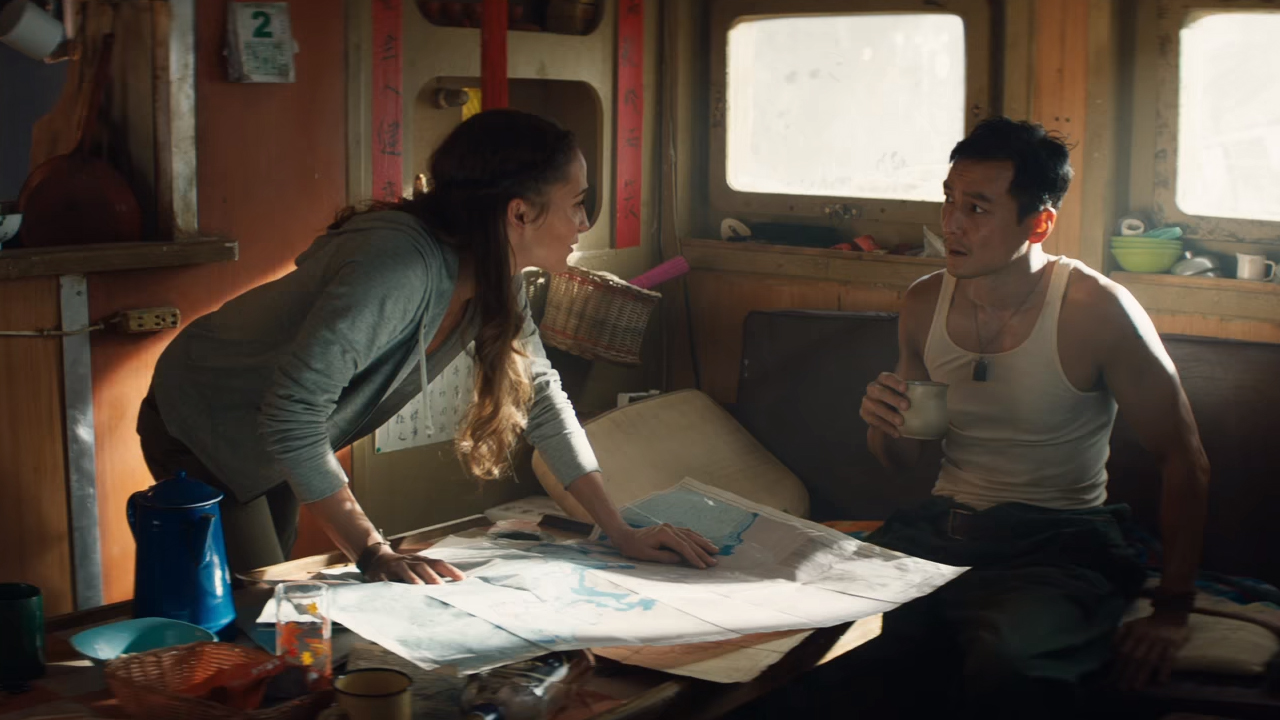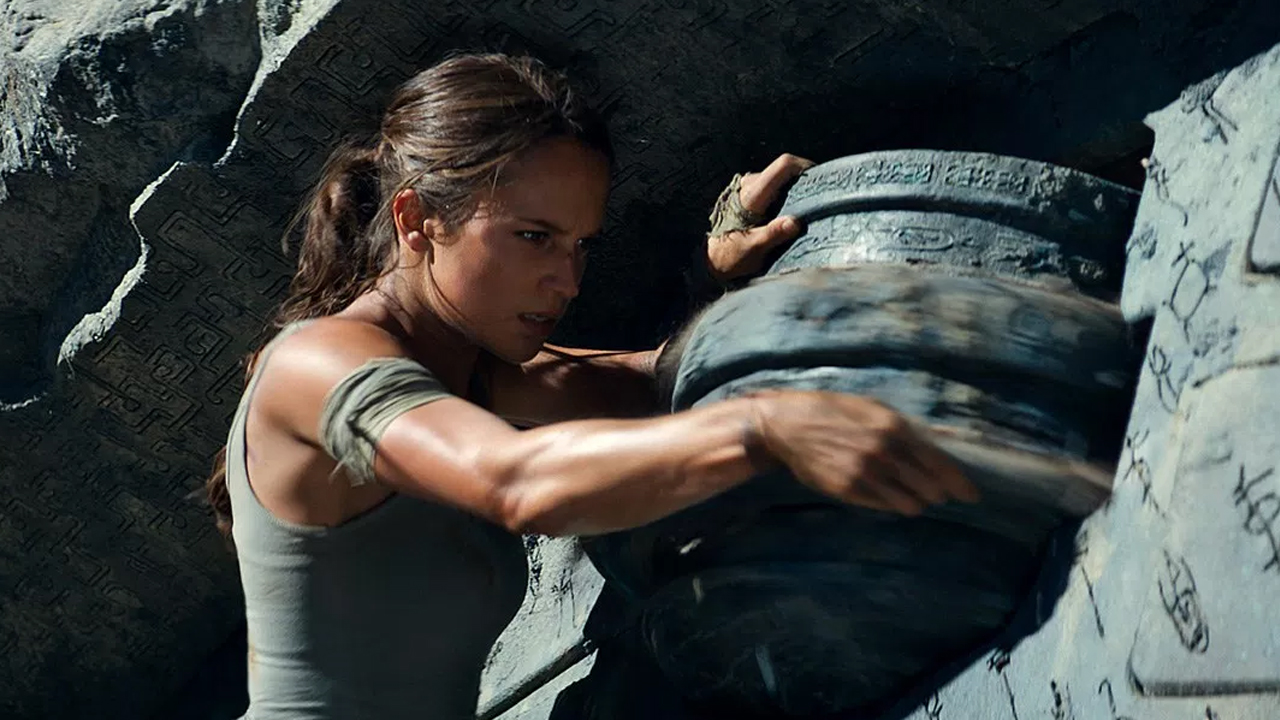6 questions I have after watching Tomb Raider
From plot holes to game differences, we'd love it if Lara Croft could answer some of our curiosities

It's not exactly full of surprises, but I had a fun time watching the Tomb Raider movie, starring Alicia Vikander as the iconic Lara Croft. The plot and tone of this film reboot mirror the 2013 game reboot of the same name, chronicling Lara's transformation from aimless young heiress to hardened survivor. But while the general premise may be the same - Lara winds up on the mysterious island of Yamatai, seeking out her lost father and Himiko, the Death Queen of Japanese legend - this movie diverts in some key ways, raising some queries about the differences in the plot. With the knowledge that there are major SPOILERS ahead, here's everything I wondered (to myself) as the Tomb Raider credits rolled. See if you found yourself asking the same questions when it was all over.
1. How did everyone else find Yamatai?

For being an uncharted island in the middle of the Devil's Sea, there sure are a lot of people besides Lara who find their way onto Yamatai. The movie does explain the presence of all the people forced into slavery by Trinity, as Lu Ren learns that they're fisherman who had the bad luck of crash-landing onto Yamatai during storms. But what about Mathias (Walton Goggins) and the other Trinity-employed goons? Lara's dear old dad, Lord Richard Croft, made it pretty clear that he wanted Lara to burn all of his research on Himiko lest it fall into Trinity's hands. If all the maps and coordinates were stashed away in his hideout, then how did Trinity figure out Yamatai's location? Perhaps they could've simply tailed Richard during his treacherous travels, but they seemed to be unaware that he had made it onto the island in the first place. Maybe the fine folks at Trinity HQ are as knowledgeable as the Crofts; then again, their best solution to uncovering and opening Himiko's tomb was 'blast it to bits with the repeated use of explosives.'
2. Why didn't Mathias get chummy with the mercenaries?

Mathias is painted as a fanatically religious cult leader in the Tomb Raider game, but his film counterpart is a much more pragmatic villain. Despite his slow-talking creepiness and propensity for killing innocent people who are being overworked, we're given the chance to have some sympathy for Mathias as someone who'll desperately do anything to get back home and see his daughters again. Mathias keeps reiterating how glad he is to see Lara, repeatedly bemoaning the fact that he had nobody to talk to besides his employer on the other end of the walkie talkie - but that obviously isn't true. They may be gun-toting jerkwads with no moral opposition to slave labor, but the Trinity-backed mercenaries on the island clearly speak English. Maybe Mathias thinks those thugs are beneath him and that he's their intellectual superior, but he could've easily tried bonding with his fellow bad guys to stop himself from slowly going insane. No man is an island, Mathias - go make friends with those ruthless killers already!
3. Where are all the animals?

From what I can recall, I only saw one single wild animal on the entirety of Yamatai: the lone lizard who creeps into frame in the nighttime scene where Lara has to kill someone for the first time. This is puzzling, to say the least, given that Yamatai has been largely human-free for centuries and should be absolutely teeming with wildlife by this point. It's also a marked departure from the games, where Lara is constantly needing to kill animals - not because she necessarily wants to, but for her own survival (and, sure, the need to craft better gear). Bloodthirsty wolves, tigers, and bears have long been a staple of the games, so it seems odd that Lara wouldn't have to fend at least one of them off during her harrowing escape into the jungle. Maybe the Tomb Raider filmmakers just didn't want Lara to seem like a heartless, pro-fur slaughterer of endangered species.
4. How did Lara and Mathias make it back through the trap room with no floor?

I won't even go into how ancient civilizations could've engineered such incredibly intricate trap rooms, with this one somehow able to detect the color of light (which wouldn't even be there if not for the mercenary holding a flashlight on the other side). Suspension of disbelief aside, it makes for an intense scene as the tiles of the floor fall out from under everyone to reveal a gaping chasm before the crew makes a daring escape further into the tomb. But that begs the question: with the floor now missing, how did Lara and Mathias make their way back across the bottomless room to reach the ladder-bridge leading to the exit? As far as I remember, the floor didn't magically replace itself via another mechanism once the room was 'solved.' It's particularly perplexing in Mathias' case, as he's clearly limping from the leg injury he received in Himiko's burial room. Could be that he's just a really impressive one-legged jumper.
5. Why not go after Ana Miller directly?

In a somewhat unnecessary twist, Lara comes to the horrifying realization that Ana Miller (Kristin Scott Thomas) - her guardian and the person who just inherited control over the Croft empire after Lara signed it over - is secretly pulling the strings for the Order of Trinity, which caused this whole fiasco in the first place. With this newfound knowledge, Lara vows to prevent Trinity from ever enacting their evil schemes... by following their pursuits of ancient artifacts and beating them to the punch. Wouldn't it be a lot simpler to confront Ana directly now that Lara knows the truth about her benefactor? Granted, it might not be the best idea to hold Ana at gunpoint in Croft Plaza and demand a confession, but it seems like Lara is consciously letting Trinity continue to operate by not immediately putting the screws to Miller.
6. Is the franchise willing to go mythical again?

Here's the big one. In the grand finale of the 2013 game, Himiko's spirit is actually resurrected by Mathias, summoning an army of giant ogres in the process, and her evil presence attempts to possess Lara's friend Sam - all fully confirming that supernatural elements exist in this otherwise realistic world. But the film explains Himiko's death touch as an ultra-lethal pathogen that can decompose your body on contact. With this magical power given a scientific explanation, does this mean that any Tomb Raider sequels (which the ending clearly hints at) will resist dipping into the realm of mythology-turned-reality? It might be that this Tomb Raider film franchise wants to disassociate itself from the campy Angelina Jolie films, in which Lara Croft tussles with living statues and Sasquatch-sized monstrosities.
Bringing all the latest movie news, features, and reviews to your inbox
For more Tomb Raider-related info, read our interview with Alicia Vikander, where she tells us what it was like becoming Lara Croft, her favorite Tomb Raider game, and her toilet-based plans for her Oscar.
Lucas Sullivan is the former US Managing Editor of GamesRadar+. Lucas spent seven years working for GR, starting as an Associate Editor in 2012 before climbing the ranks. He left us in 2019 to pursue a career path on the other side of the fence, joining 2K Games as a Global Content Manager. Lucas doesn't get to write about games like Borderlands and Mafia anymore, but he does get to help make and market them.



